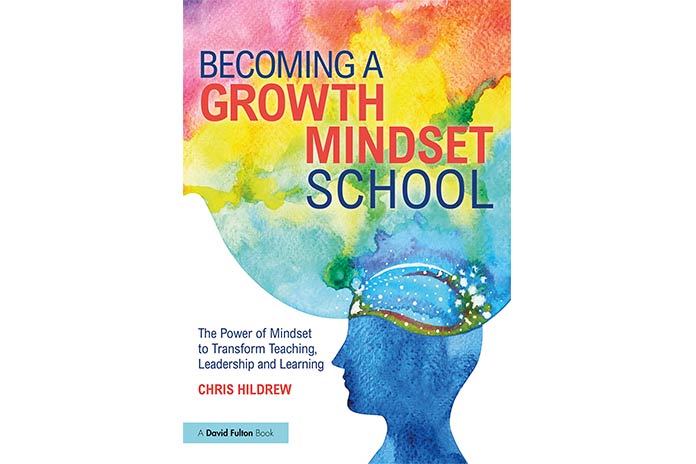The Headmaster of Churchill Academy, a state school in
In Becoming a growth mindset school, I wrote about my work as a Deputy Headteacher and Headteacher as we worked to scale up Professor Carol Dweck’s work on mindset into a whole-school culture. A growth mindset culture seeks to tackle motivation by instilling a school-wide ethos that we can all improve through the careful, consistent and deliberate application of appropriate strategies. We have sought to provide all our learners with strategies to overcome difficulty by celebrating behaviours such as persistence, struggle and taking on difficult challenges.
In Carol Dweck’s research she observes that people with a growth mindset embrace challenges, persist in the face of setbacks, see effort as the path to mastery, learn from criticism and find inspiration in the success of others. As a result, they avoid the fixed mindset that can trap them into an early plateau and cause them to fall short of their unknowable potential. These are exactly the attitudes I want to build in learners – and staff!
There is a sense that simply saying ‘growth mindset’ is supposed to wave a magic wand over your school. This is not the case, and Dweck herself is very clear about it! Having a growth mindset does not mean you will succeed at everything. In painting, simply having a growth mindset will not make me Picasso; in running it will not make me Usain Bolt. But having a growth mindset will make me better at painting and running than I am now, and that is why I adopt the approach.
Getting growth mindset back to front
In our work in school, we have come to the conclusion that many people understand mindset effects back to front. The way that many of Dweck’s initial experiments have been presented led us initially to believe that developing a growth mindset in our students would lead them to increased motivation and greater academic success. This meant that our first attempts at developing a growth mindset culture saw us working on mindsets in isolation, through assemblies, displays, and specialised lessons designed to introduce the concepts and approaches. Whilst these approaches did no harm, they were not habit-forming and did not, in many cases, change student attitudes.
What we now understand is that, in fact, it is the other way around: greater academic success and progress, when it is the result of determined and consistent effort, develops a growth mindset in our students. When students apply effort and carefully chosen learning strategies in school, and then see the progress they make as a result, they begin to equate effort and strategy with academic success and achievement, and they are then more likely to apply that approach in future.
Working on student motivation
In order to focus students on their approach to learning and the strategies they are using, rather than just the outcomes, we re-thought our whole school culture. This started with us considering the Academy’s core values, to align them to our approach to developing a growth mindset. In the end, we settled on settled on our three Academy values: kindness (heart), curiosity (mind), and determination (will).
The framework we have established is that at Churchill, we believe in the value of:
- Determined and consistent effort
- A hunger to learn new things
- Challenging ourselves to go beyond our comfort zone
- Viewing setbacks and mistakes as opportunities to learn and grow
- Seeking responding to feedback
- Encouraging others to succeed
This set of statements informs are used as the basis for conversations between teachers, tutors, students and parents in order to coach learners to ever-more-effective study habits and approaches to their lessons.
Our approach to mindset provides a road map and a template for any student who wants to thrive and make exceptional progress. Our message now is simple: if these students did it – you can too.

Becoming a growth mindset school by Chris Hildrew (Routledge) is out now.
You may also like...

























